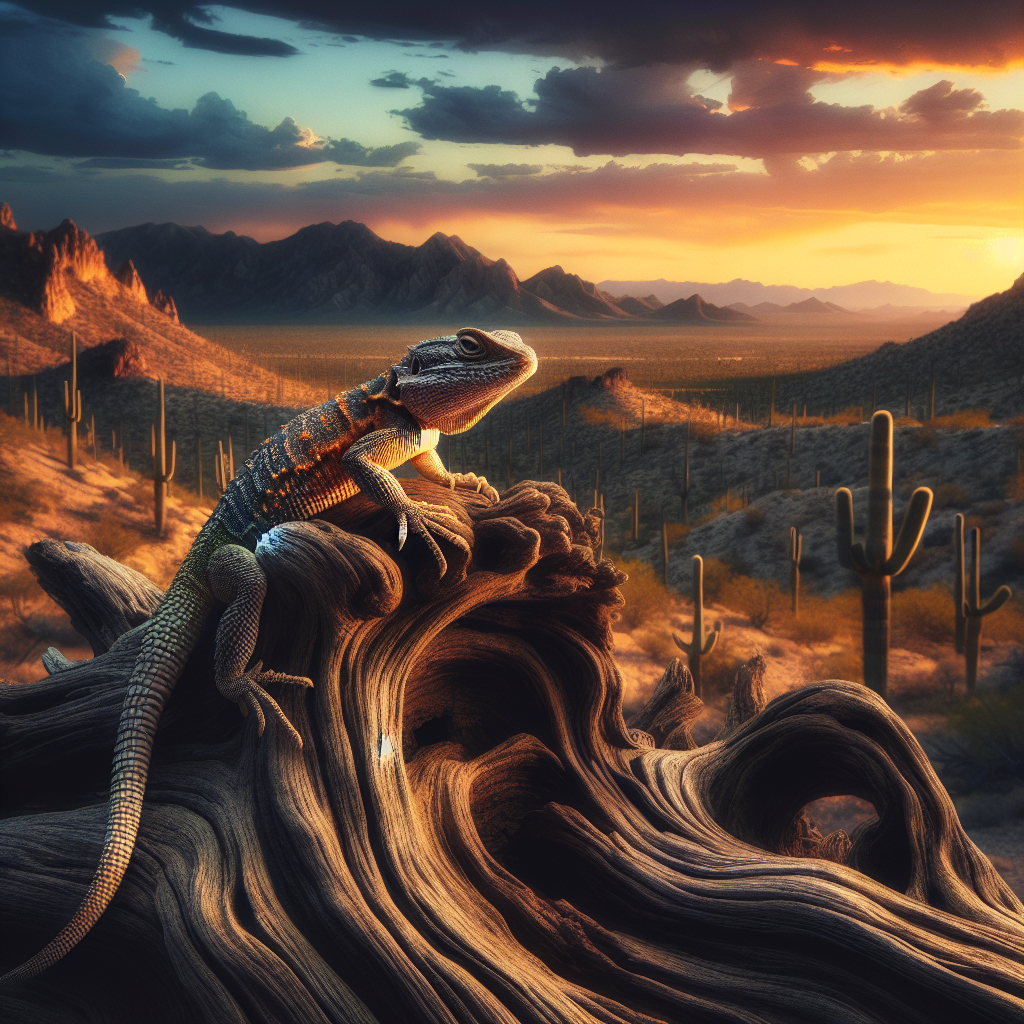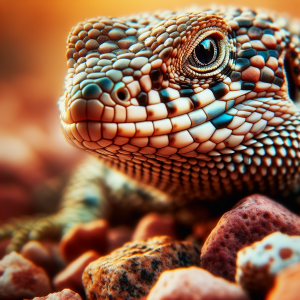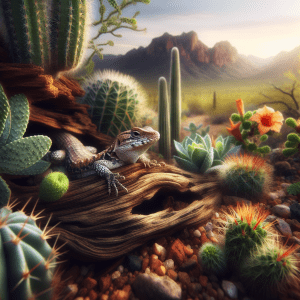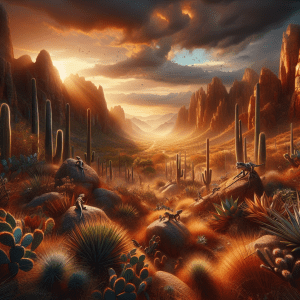Introduction to Lizard Distribution in the Sonoran Desert
Ever wondered about the fascinating world of lizard distribution in the Sonoran Desert? Picture this: a vast, sun-scorched landscape stretching as far as the eye can see, dotted with rocky outcrops and cacti. Now, imagine these resilient creatures, blending seamlessly into their arid surroundings, showcasing their remarkable adaptations to thrive in such harsh conditions.
Let me take you on a journey through the hidden realm of Sonoran Desert lizards, where each species has its own unique story to tell. From the iconic Gila monsters to the elusive chuckwallas, these desert dwellers have evolved over centuries to conquer the challenges of their environment.
Did you know that certain lizard species in the Sonoran Desert can go months without water, relying on specialized behaviors and physiological traits to survive? It’s a testament to their resilience and ingenuity in the face of adversity.
As we delve deeper into the intricate web of lizard distribution, we uncover secrets of their preferred habitats, ranging from rocky desert slopes to sandy washes. Each species has carved out its own niche in this arid paradise, showcasing a delicate balance of predator and prey dynamics.
So, join me on this adventure of discovery as we unravel the mysteries of lizard distribution in the Sonoran Desert. From their camouflage tactics to their unique behaviors, there’s a world of wonder waiting to be explored in this captivating ecosystem. Get ready to be amazed by the hidden treasures that lie beneath the desert sun.
Characteristics of the Sonoran Desert Ecosystem
Characteristics of the Sonoran Desert Ecosystem
The Sonoran Desert is a mesmerizing landscape teeming with life, despite its harsh conditions. Picture this: scorching temperatures, rugged terrain, yet an oasis for diverse species, especially lizards. These reptiles have evolved remarkable adaptations to thrive in this unforgiving environment. One fascinating fact is that the Sonoran Desert is home to a variety of lizard species, each with its unique traits and behaviors. Imagine stumbling upon a Gila monster, known for its vivid patterns and venomous bite, or the agile desert spiny lizard darting across rocks with ease. These creatures have finely tuned senses that help them navigate the desert’s challenges. But here’s the kicker – the intricate relationship between lizards and their habitat is crucial for ecosystem balance. By understanding the habitat preferences of Sonoran Desert lizards, we gain insights into preserving their fragile ecosystem. Consider this: what can we do to protect these fascinating creatures and ensure their survival in the face of environmental changes? As we delve deeper into the world of Sonoran Desert lizards, let’s appreciate their resilience and beauty, a testament to nature’s wonders.
Overview of Lizard Species Found in the Sonoran Desert
Have you ever stopped to marvel at the incredible variety of lizard species that call the Sonoran Desert home? From the vibrant colors of the Gila monster to the lightning-fast movements of the collared lizard, these desert dwellers are nothing short of fascinating.
It’s like stepping into a miniature world of reptilian wonder, where each species has its own unique characteristics and adaptations to thrive in this harsh environment. Take the chuckwalla, for example, with its ability to inflate its body to evade predators or the regal horned lizard that shoots blood from its eyes as a defense mechanism.
These lizards have evolved over centuries to withstand scorching temperatures, scarce water sources, and predators lurking at every turn. It’s a true testament to the resilience and ingenuity of nature.
But have you ever wondered how these lizards manage to find enough food and water to survive in such a challenging landscape? The Sonoran Desert may seem barren to the untrained eye, but it’s teeming with life if you know where to look.
Stay tuned as we delve deeper into the habitat preferences of Sonoran Desert lizards and uncover the secrets of their survival in one of the harshest environments on Earth. Get ready to be amazed by the hidden world of these desert-dwelling reptiles!
Habitat Preferences of Sonoran Desert Lizards
In the Sonoran Desert, lizards have evolved remarkable adaptations to thrive in this harsh environment. One fascinating aspect is their habitat preferences. These reptiles have specific needs when it comes to where they live. Picture this: a spiky, barrel cactus providing shade for a chuckwalla as it basks in the sun. Lizards like the chuckwalla seek out sheltered spots with access to sunlight for thermoregulation. It’s a delicate balance between seeking warmth and avoiding overheating in the scorching desert sun. The landscape of the Sonoran Desert plays a crucial role in determining which lizard species can be found where. From rocky outcrops to sandy washes, each habitat offers unique challenges and opportunities for lizards to carve out their niche. Understanding these habitat preferences can help us appreciate the intricate web of life in the Sonoran Desert. Have you ever wondered how lizards choose their homes in such a rugged environment? The interplay between habitat features and lizard behavior is a fascinating subject that researchers continue to explore. By delving into the world of lizard habitat preferences, we gain a deeper appreciation for the resilience and resourcefulness of these desert dwellers.
Adaptations of Lizards to Survive in the Harsh Desert Environment
Have you ever wondered how lizards manage to thrive in the scorching heat of the Sonoran Desert? These amazing creatures have evolved some truly incredible adaptations to survive in such a harsh environment. One of the most fascinating aspects of Sonoran Desert lizards is their ability to regulate their body temperature in extreme conditions. Imagine being able to bask in the sun for hours without breaking a sweat! These lizards have developed specialized skin that helps them absorb and retain heat, allowing them to stay active even in the blistering desert heat. It’s like having your own built-in solar panel system!
Another remarkable feature of Sonoran Desert lizards is their keen sense of sight and smell, which helps them locate prey and avoid predators in the vast desert landscape. Their ability to blend seamlessly into their surroundings also provides them with excellent camouflage, making them nearly invisible to unsuspecting prey.
The next time you find yourself wandering through the Sonoran Desert, keep an eye out for these elusive creatures. Their intricate adaptations and behaviors are a testament to the incredible diversity of life that thrives in this unique ecosystem. So, have you ever spotted a Sonoran Desert lizard in the wild?
Factors Influencing Lizard Distribution in the Sonoran Desert
Imagine standing in the vastness of the Sonoran Desert, surrounded by its breathtaking beauty. Now, picture yourself observing the fascinating array of lizards that call this harsh environment home. It’s truly a sight to behold. These resilient creatures have evolved over time to thrive in this arid landscape, showcasing remarkable adaptations that allow them to survive where many others cannot.
One interesting fact about lizard distribution in the Sonoran Desert is the influence of temperature on their habitat preferences. Lizards are ectotherms, meaning they rely on external heat sources to regulate their body temperature. This dependency on warmth plays a crucial role in determining where different lizard species choose to reside within the desert. Some lizards may seek out sun-soaked rocks or sandy areas to bask in the heat, while others may retreat to shaded spots to avoid overheating.
As you delve deeper into the world of lizard distribution in the Sonoran Desert, you might find yourself pondering the significance of these creatures in the larger ecosystem. How do their presence and behaviors contribute to the delicate balance of life in this arid region? What can we learn from their adaptations and survival strategies in such a challenging environment?
Exploring the complexities of lizard distribution in the Sonoran Desert opens up a world of wonder and discovery. From the vibrant colors of a collared lizard to the stealthy movements of a desert spiny lizard, each species offers a unique glimpse into the diversity of life in this extraordinary desert landscape. So, next time you find yourself in the Sonoran Desert, take a moment to appreciate the beauty and resilience of the lizards that call it home.
Conservation Efforts to Protect Lizards in the Sonoran Desert
Conservation efforts to protect lizards in the Sonoran Desert are crucial for preserving biodiversity. Picture this: a delicate dance between humans and wildlife, each reliant on the other for survival. As we strive to maintain the delicate balance of nature, our actions can have a profound impact on the future of these fascinating creatures.
Imagine hiking through the rugged terrain of the Sonoran Desert, catching a glimpse of a vibrant lizard darting across the sandy landscape. These moments are not just fleeting encounters but a reminder of the interconnectedness of all living beings in this vast ecosystem.
By understanding the habitat needs and behaviors of Sonoran Desert lizards, we can better protect their populations from threats such as habitat destruction and climate change. Every small action we take, whether it’s conserving water or supporting local conservation initiatives, can make a difference in safeguarding the future of these unique species.
Let’s delve deeper into the world of Sonoran Desert lizards and uncover the hidden wonders that lie within this arid landscape. Join me on a journey of discovery as we explore the intricate web of life that sustains these remarkable creatures. Together, we can ensure that future generations will continue to marvel at the beauty and diversity of lizard species in the Sonoran Desert.
Best Places to Spot Lizards in the Sonoran Desert
Have you ever wondered where to find the best spots for lizard watching in the Sonoran Desert? Well, let me share with you some insider tips that will make your lizard-spotting adventure even more exciting.
One of the top recommendations for spotting lizards in the Sonoran Desert is to head to rocky outcrops or boulder fields. These areas provide ideal basking spots for lizards seeking warmth from the sun. Keep your eyes peeled for movement among the rocks, as lizards are experts at blending in with their surroundings.
Another hotspot for lizard sightings in the Sonoran Desert is near water sources such as creeks or streams. Lizards are attracted to these areas not only for hydration but also for the abundance of insects and other prey that gather around water sources. Be patient and observant near these spots, and you might just catch a glimpse of a lizard in action.
If you’re lucky, you may even come across a chuckwalla, a large and charismatic lizard known for its comical antics. These herbivorous lizards are a delight to watch as they scurry over rocks and puff themselves up to intimidate potential predators.
So, lace up your hiking boots, grab your binoculars, and get ready to embark on a lizard-spotting adventure in the Sonoran Desert. Who knows what fascinating creatures you’ll encounter along the way? Happy hunting!
Interesting Facts about Lizard Behavior in the Sonoran Desert
Have you ever wondered how lizards navigate the scorching Sonoran Desert with such finesse? These resilient creatures have some fascinating tricks up their sleeves.
Let’s dive into the intriguing world of lizard behavior in the Sonoran Desert. Picture this – a tiny gecko effortlessly scurrying across the desert floor, seemingly defying gravity with its sticky toe pads.
One interesting fact about Sonoran Desert lizards is their ability to regulate body temperature through behavioral adaptations. They bask in the sun to warm up and seek shade to cool down, mastering the art of thermoregulation.
Ever noticed how some lizards perform push-ups? These seemingly playful actions actually serve a vital purpose, helping them communicate dominance or attract potential mates in their desert habitat.
So, next time you spot a lizard doing push-ups in the Sonoran Desert, remember it’s not just for show – it’s all part of their survival strategy.
Now, think about this – how do lizards manage to find food and water in such a harsh environment? Their keen sense of smell and sharp eyesight play crucial roles in detecting prey and locating water sources amidst the arid landscape.
As you observe these remarkable creatures in their natural habitat, take a moment to appreciate the intricate behaviors and adaptations that enable Sonoran Desert lizards to thrive against all odds.
Conclusion: Appreciating the Rich Biodiversity of Sonoran Desert Lizards
Have you ever wondered about the incredible lizard distribution in the Sonoran Desert? It’s truly fascinating. Picture this: a vast expanse of arid land, dotted with unique plant life and rocky outcrops, serving as the home to a myriad of lizard species. These resilient creatures have adapted to thrive in this harsh environment, showcasing a diverse array of colors, sizes, and behaviors. One interesting fact is that the Sonoran Desert is home to more than 60 different species of lizards, each with its own distinct characteristics. Imagine stumbling upon a vibrant Gila monster or a speedy collared lizard during your desert explorations. The challenge lies in understanding how these lizards navigate their surroundings and find food and shelter in such a challenging habitat. Conservation efforts are crucial to ensuring the survival of these remarkable creatures and preserving the delicate balance of the desert ecosystem. So, the next time you find yourself in the Sonoran Desert, keep your eyes peeled for these elusive reptiles and marvel at the wonders of nature.




